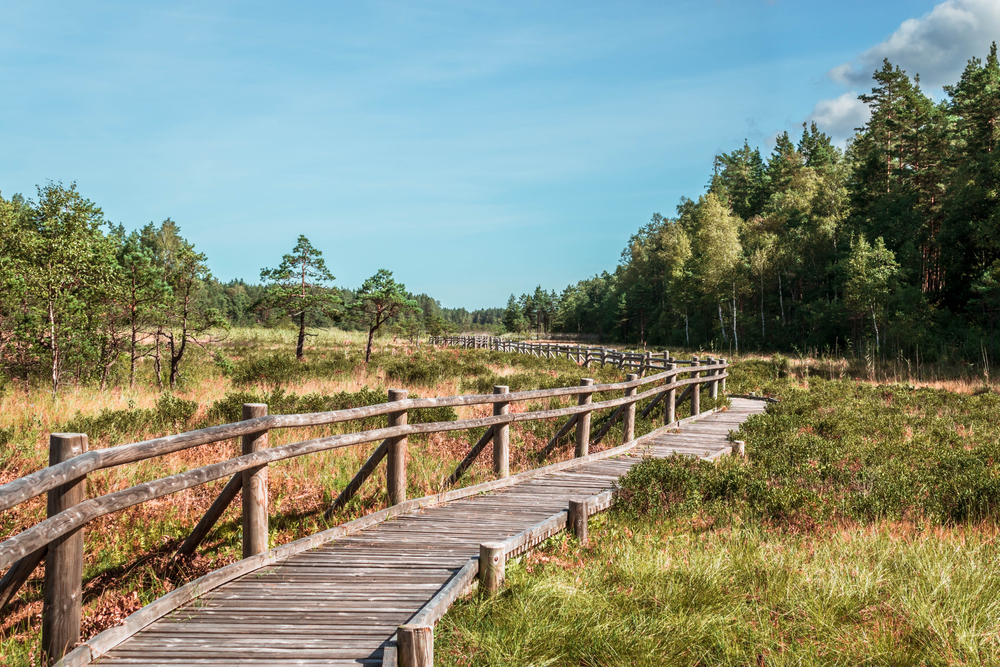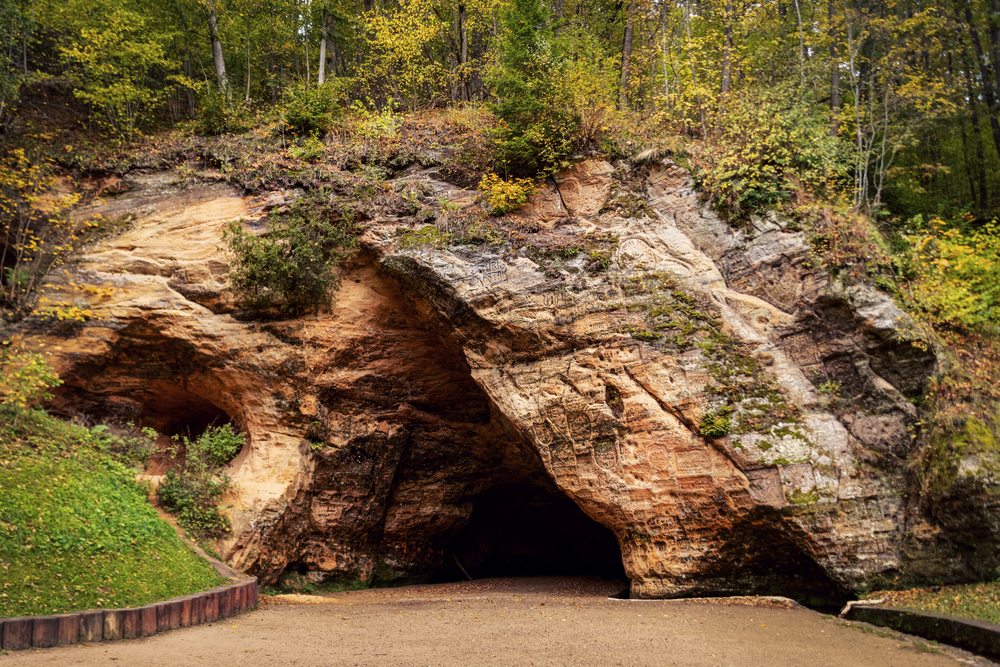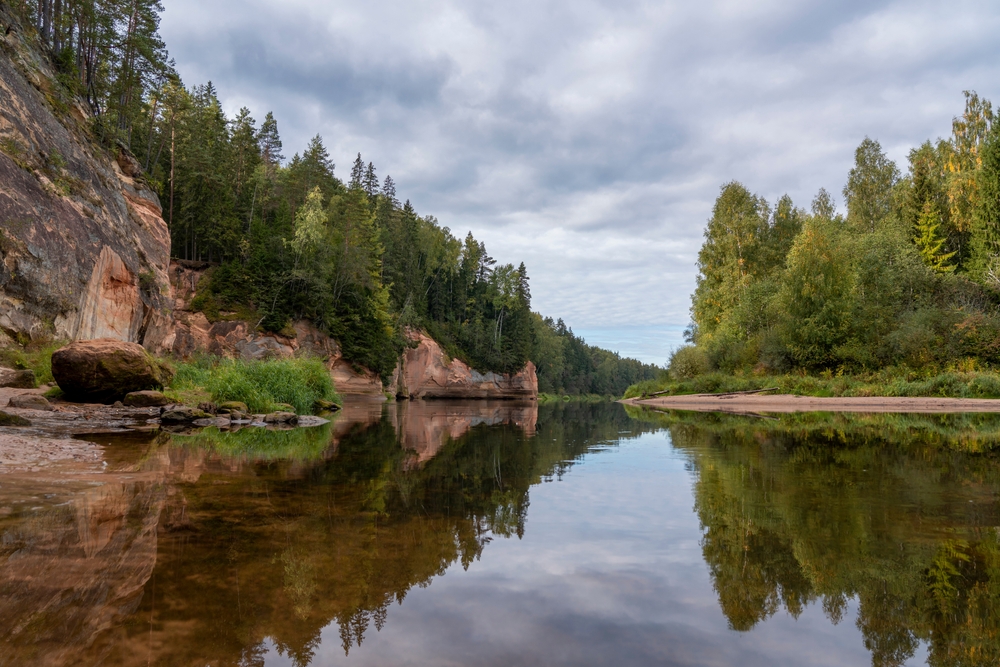Gauja Overview
Gauja National Park, locally known as Gaujas Nacionālais parks, is the largest and oldest national park in Latvia, covering an area of approximately 355 square miles (920 square kilometers).
Located in the northeastern part of the country, the park stretches along the Gauja River Valley, encompassing a diverse range of natural and cultural treasures. Established in 1973, it is often referred to as the “Switzerland of Latvia” due to its picturesque landscapes and rolling terrain.
The park’s terrain is characterized by sandstone cliffs, deep ravines, caves, and lush forests, offering an idyllic natural setting. The Gauja River, the lifeblood of the park, winds its way through the landscape, creating stunning views of meandering water, steep banks, and forested hills.
Some of the most striking geological features include the Erglu Cliffs, towering sandstone formations that offer panoramic views of the surrounding valley, and the Gutmanis Cave, the largest sandstone cave in the Baltics, adorned with ancient inscriptions dating back to the 17th century. Dense forests of pine, spruce, and oak dominate the park, while meadowlands and wetlands contribute to its ecological diversity.
Gauja National Park is a haven for wildlife, home to over 900 plant species, 149 bird species, and 48 mammal species. The park’s forests are inhabited by elusive creatures such as lynx, Eurasian otters, and red deer.
Birdwatchers can spot black storks, lesser spotted eagles, and other rare birds that thrive in this pristine environment. The Gauja River and its tributaries support a variety of aquatic life, including brown trout and European crayfish, while the park’s wetlands attract beavers and amphibians.
Popular features of Gauja National Park include its extensive network of hiking and cycling trails, as well as opportunities for canoeing and kayaking on the Gauja River. The park also boasts an impressive collection of cultural landmarks, including medieval castles and manor houses.
Turaida Castle, a red-brick fortress built in the 13th century, is one of the park’s most iconic attractions, offering a glimpse into Latvia’s history and panoramic views of the valley. Cēsis Castle, another medieval gem, invites visitors to explore its well-preserved ruins and learn about the region’s past.
Visitors can engage with the park through various activities, from adventurous pursuits like zip-lining over the valley to relaxing boat tours on the Gauja River. Nature trails such as the Amata Trail allow visitors to immerse themselves in the park’s biodiversity, while guided tours provide insights into its geology and history. Winter transforms the park into a snowy wonderland, with opportunities for cross-country skiing and sledding.
Conservation efforts in Gauja National Park focus on preserving its rich biodiversity and cultural heritage. The park’s management works to maintain the balance between sustainable tourism and habitat protection. Challenges such as habitat degradation and invasive species are addressed through monitoring programs and restoration projects. Latvia’s commitment to conservation has ensured that Gauja National Park remains a thriving sanctuary for nature and culture alike.
Park Map
Gauja National Park Highlights
Engaging Guaja National Park
Related National Parks More Latvia
Sources
- Adventure Travel News, Guaja National Park, https://www.adventuretravelnews.com/gauja-national-park-offers-visitors-hiking-trails-and-charming-towns, retrieved August 2024.
- Borders of Adventure, Guaja National Park, https://www.bordersofadventure.com/gauja-national-park-latvia-nature/, retrieved August 2024.
- Enter Guaja, Guaja National Park, https://www.entergauja.com/lt/enter-gauja/about-region/gauja-national-park, retrieved August 2024.
- Latvia Tavel, Guaja National Park, https://www.latvia.travel/en/sight/gauja-national-park, retrieved August 2024.
- Wikipedia, Guaja National Park, https://en.wikipedia.org/wiki/Gauja_National_Park, retrieved August 2024.























































































